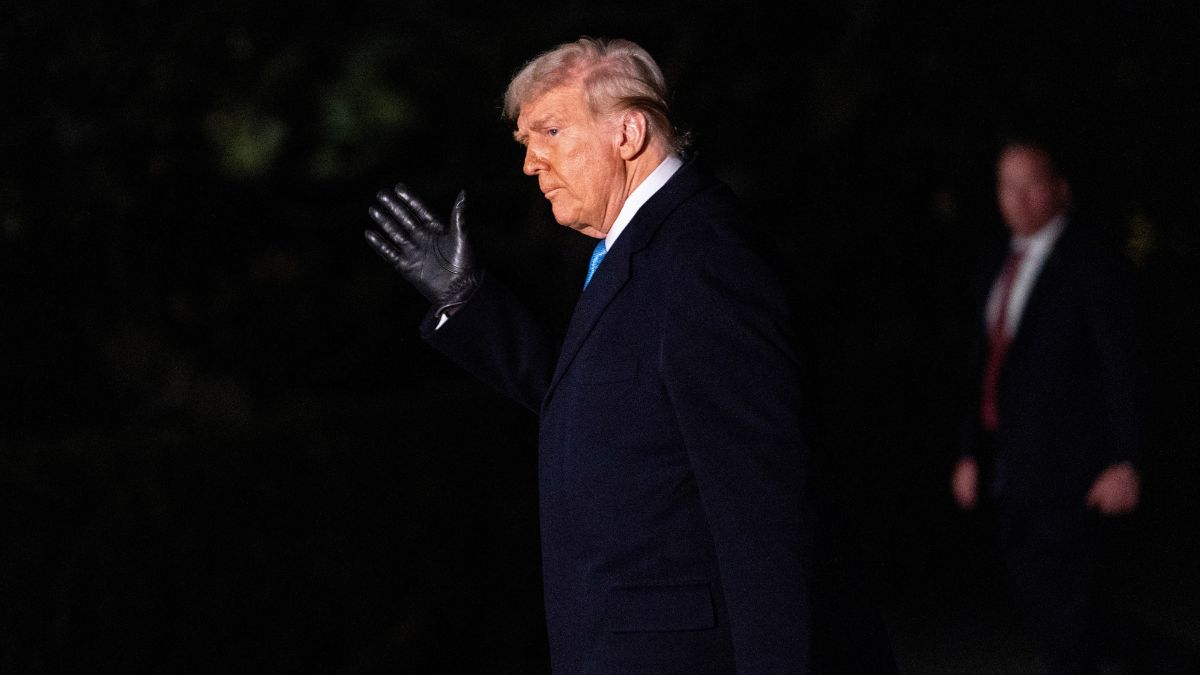It’s “Liberation Day” for the US. Donald Trump unveiled sweeping new tariffs, upending decades of trade policy and escalating a trade war. He announced universal 10 per cent tariffs on all imports to the US, which will go into effect on 5 April (Saturday). He also announced higher tariffs on countries based on US trade deficits, with some facing levies as high as 50 per cent, which begin on 9 April (Wednesday). More than 180 countries will be affected; no country will be spared. India has also been slapped with tariffs – 26 per cent “discounted reciprocal tariff”.
What has Trump said about India? And how will the new levies affect the country? We explain.
What tariffs has Trump announced for India?
Donald Trump announced a 25 per cent reciprocal tariff on India, which is lower compared to several Asian peers. It’s a move that could likely favour Indian exports.
During his speech from the Rose Garden of the White House, the US president recalled his remark to Prime Minister Narendra Modi regarding ties with India when the two leaders met in Washington in February.
“India, very, very tough. Very, very tough. The Prime Minister just left. He’s a great friend of mine, but I said, ‘You are a friend of mine, but you are not treating us right,’” Trump said at the “Make America Wealthy Again” event.
“India charges us 52 per cent, so we will charge them half of that – 26 per cent,” the US president announced, as he unveiled reciprocal tariffs on countries that levy duties on American goods.
Trump tariffs live updates: Catch the latest hereHow does India compare to other Asian nations?
Tariffs on India were lower compared to several Asian counterparts. Trump has imposed 34 per cent tariffs on China, which is America’s key trading partner.
India’s tariffs were lower than those imposed on Thailand and Indonesia, 36 per cent and 32 per cent, respectively. These countries receive big investments from China and are increasingly integrating with the Chinese supply chain, reports The Indian Express. On Taiwan, which is a chip manufacturing hub, the US announced 32 per cent tariffs. Cambodia faces the highest tariffs of 49 per cent.
The levies on India were higher compared to Japan (24 per cent), South Korea (25 per cent), and Malaysia (24 per cent).
The US has imposed 37 per cent tariffs on Bangladesh, 44 per cent on Sri Lanka and 29 per cent on Pakistan.
LIBERATION DAY RECIPROCAL TARIFFS 🇺🇸 pic.twitter.com/ODckbUWKvO
— The White House (@WhiteHouse) April 2, 2025
The individualised reciprocal tariffs will be effective from April 9. Trump said that he is only charging half the tariffs that other countries have been imposing.
“I call this kind reciprocal. This is not fully reciprocal. But what we do is we cut it in half. We charge them. The answer is very simple—if they complain, if you want your tariff rate to be zero, then you build your product right here in America because there is no tariff,” Potus said.
What could be the impact of tariffs on India?
The precise impact of tariffs on India will be analysed as more details emerge. However, India’s top export body, the Federation of Indian Export Organisations (FIEO), said on Thursday that the 26 per cent tariffs on import duties will affect some domestic players.
According to Ajay Shah, director general and CEO of FIEO, India is much better placed than other countries. “We have to assess the impact, but looking at the reciprocal tariffs imposed on other countries, we are in a lower band. We are much better placed compared to our key competitors such as Vietnam, China, Indonesia, Myanmar, etc. We will definitely be affected by the tariffs, but we are much better placed than many others,” Sahai told PTI.
He hoped that the proposed bilateral trade agreement, currently being negotiated between the two countries, would be concluded at the earliest, as it would provide relief from these reciprocal tariffs.
According to some experts, Trump’s decision to announce tariffs at half the rate of what countries impose on US products leaves room for negotiations.
“The tariff of 26 per cent on India is not excessive compared to tariffs on other countries like China, Taiwan, Sri Lanka and Bangladesh. The market is likely to respond negatively. With a possible bilateral trade agreement between India and the US, tariffs are likely to come down,” VK Vijayakumar, chief investment strategist at Geojit Investments Limited, was quoted as saying by Mint.
The sectors most likely to be affected are electronics, jewellery and gems, pharma products, refined petroleum products, machinery for nuclear reactors, auto parts and electronic hardware.
Ajay Bagga, a banking and international stocks expert told ANI that these tariffs are based on exaggerated calculations, which include actual customs duties, alleged currency manipulation, and GST. He described the shift in US trade policy as moving from ‘America First” to “America Alone”.
“The Indian domestic sectors are protected from first-level effects, but Indian textiles, engineering goods, electronics, and gems & jewellery exporters are immediately impacted. Metals are seeing a sell-off this morning, along with oil. Pharma majors are in wait-and-watch mode as sectoral tariffs will be levied on these,” he said.
According to Bagga, India’s domestic sectors might not feel the immediate impact, but exporters will bear the brunt of the increased costs.
The sudden tariff imposition is expected to impact India’s economy in multiple ways. The higher duties could lead to a decline in Indian exports, eroding margins for exporters, reports ANI.
Can a trade deal with the US help India?
Trump, in his ‘Liberation Day’ speech, indicated that he is open to negotiation. That is good news for India, which is currently negotiating a trade deal with the US through which both nations have agreed to reduce duties.
A day before the latest tariffs were announced, India reportedly agreed to the terms of reference for the Bilateral Trade Agreement (BTA). The Prime Minister’s Office (PMO) has stepped in and is keen to finalise the deal.
The two sides are ready for formal negotiations, where India is expected to lower tariffs on American goods in exchange for US concessions, an Indian government official told The Indian Express.
The trade deal is part of a new goal – “Mission 500” – aiming to more than double bilateral trade in goods and services to $500 billion by 2030, as agreed during PM Modi’s visit to the US on February 13.
The two nations are expected to finalise the first tranche of the trade deal by fall this year. With diplomacy and a trade deal in the works, India can hope to minimise the impact.
With inputs from agencies


)
)
)
)
)
)
)
)
)



